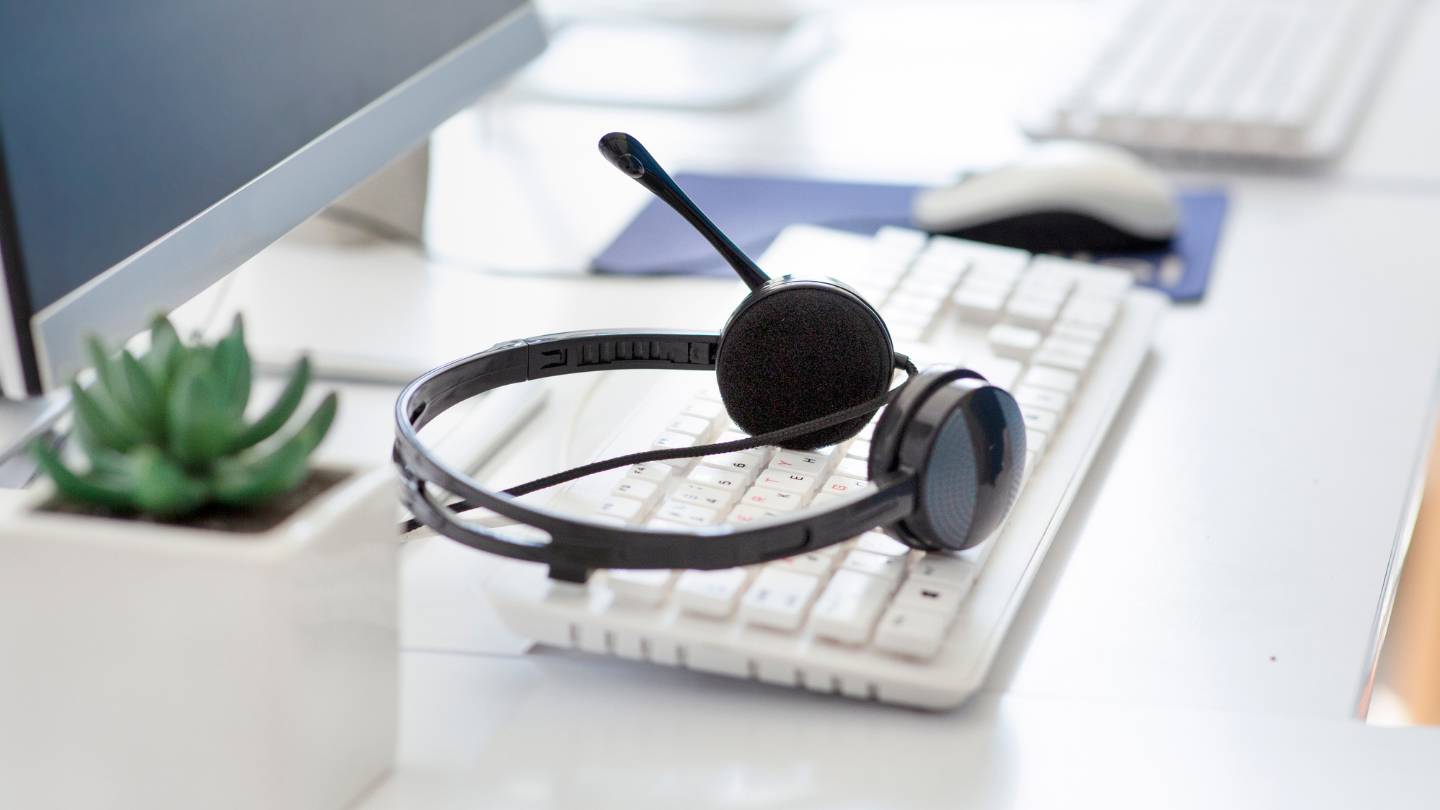How to Improve Your AHT in a Call Center: Top Strategies

Looking to reduce the Average Handle Time (AHT) in your healthcare call center? This article offers practical steps on how to improve your AHT by streamlining call handling processes and enhancing efficiency, ensuring better patient satisfaction.
Key Takeaways
- Average Handle Time (AHT) is critical for healthcare call center performance, comprising talk time, hold time, and wrap-up time, which collectively affect patient satisfaction and operational efficiency. AHT is one of the critical customer service metrics used to evaluate the efficiency and effectiveness of contact center operations.
- Implementing efficient strategies like optimizing call scripts, advanced call routing, and enhancing self-service options can significantly reduce AHT while maintaining service quality.
- Leveraging technology such as AI, call monitoring, and IVR systems streamlines workflows and improves AHT while ongoing training and performance reviews for agents ensure continuous improvement.
Understanding Average Handle Time (AHT)
In healthcare call centers, Average Handle Time (AHT) serves as a crucial metric for gauging the complete duration of a patient call from its initiation to its conclusion. The measure encompasses not just the dialogue between an agent and the patient but also any hold periods plus time dedicated to after-call work. Enhancing AHT can significantly bolster both operational efficiency and patient satisfaction. Efficient customer interactions are crucial for reducing AHT and improving patient satisfaction.
Comprising talk time, hold time, and wrap-up time, AHT’s three critical elements are integral to proficient call-handling procedures. Examining these segments enables healthcare call centers to pinpoint improvement opportunities and strategize accordingly in order to refine their average handle times efficiently.
Importance of AHT in Healthcare Call Centers
Average Handle Time (AHT) is a critical metric in healthcare call centers, where timely and efficient communication is crucial for patient care. A high AHT can lead to delayed responses, frustrated patients, and decreased customer satisfaction. In contrast, a low AHT enables healthcare call centers to respond promptly to patient inquiries, provide timely support, and improve overall patient experience. By monitoring and optimizing AHT, healthcare call centers can ensure that patients receive the care and attention they need in a timely and efficient manner.
Benefits of Reducing AHT for Customer Satisfaction
Reducing Average Handle Time (AHT) has a direct impact on customer satisfaction. When customers experience shorter wait times and faster resolutions, they are more likely to feel satisfied with the service they receive. In fact, studies have shown that customers who experience shorter AHT are more likely to return to a business and recommend it to others. By reducing AHT, businesses can improve customer satisfaction, increase loyalty, and drive long-term growth.
How to Calculate Average Handle Time
The process of determining handling time (AHT) is simple, yet it demands a comprehensive grasp of its elements. AHT can be computed by adding together the duration of Talk Time, Hold Time, and Wrap-Up Time for each call and then dividing this total by the number of Total Calls handled. This metric reflects the entire length of time patients are engaged with agents during interactions—from speaking directly with them to waiting and holding, as well as any follow-up activities that agents carry out post-call, which contributes to what’s known as average handling time.
Accurate assessments of AHT provide healthcare call centers with critical insights necessary for refining their procedures and boosting overall patient satisfaction.
Talk Time
Talk time denotes the length of time agents dedicate to direct communication with patients, not including any intervals for holding or wrapping up calls. This measure is vital as it illuminates the amount of time devoted to tackling patient problems and offering resolutions.
By efficiently controlling talk time, discussions remain succinct and targeted toward patient queries, thereby substantially decreasing Average Handle Time (AHT).
Hold Time
Minimizing the duration of patients waiting for LD or while their calls are transferred, as well as the time they spend navigating automated response systems, is essential for improving patient satisfaction. This period of inactivity is referred to as hold time.
Wrap-Up Time
Following a call, agents engage in wrap-up time activities, which include data entry and the execution of any required follow-up actions. These post-call tasks are essential to make sure that each patient interaction is fully recorded and all subsequent tasks are addressed.
Effective control of wrap-up time contributes to lowering the average handling time (AHT).
Practical Tips to Reduce AHT
Improving efficiency and enhancing patient satisfaction in healthcare call centers can be achieved by minimizing Average Handling Time (AHT). Nevertheless, it’s essential to maintain the integrity of service quality while striving for shorter AHT. Utilizing call center tools like call recording and real-time monitoring can significantly enhance efficiency and reduce AHT.
By employing effective strategies like refining call scripts, utilizing sophisticated call routing technologies, and promoting options for self-service, a harmonious equilibrium between efficiency and maintaining high levels of patient satisfaction can be maintained.
Optimize Call Scripts
Structured call scripts are vital for maintaining a focused conversation, which minimizes superfluous talk time. By preventing agents from diverging from the subject matter, these scripts support a more efficient process in managing calls and help in lowering Average Handling Time (AHT). Optimizing call scripts should also focus on maintaining a positive customer experience.
It is crucial that healthcare call centers periodically reassess and refresh their tools to guarantee they continue to be pertinent and useful in achieving optimal performance.
Implement Advanced Call Routing
Utilizing advanced call routing can markedly decrease the amount of time patients spend on hold, as it swiftly connects them with the best-suited agents for their needs. Features such as in-queue callbacks and IVR systems contribute to minimizing wait times by ensuring that callers are contacted once an agent becomes available.
By adeptly managing patient queries through sophisticated call routing, the quality of service is substantially improved while simultaneously diminishing the total time spent on handling interactions.
Encourage Self-Service Options
Patients are given the autonomy to resolve their issues through self-service tools, which can reduce the workload for agents and lead to quicker resolutions. By utilizing well-maintained knowledge bases along with interactive voice response (IVR) systems, these tools not only speed up problem-solving but also bolster overall patient satisfaction.
By implementing self-service options, healthcare call centers notice an increase in patient satisfaction levels as well as a decrease in average handling time (AHT), resulting in more efficient service operations.
Managing Customer Inquiries Effectively
Managing customer inquiries effectively is critical for providing quality customer service and improving customer satisfaction. Here are some strategies for managing customer inquiries effectively:
Handling Complex Customer Inquiries Efficiently
Handling complex customer inquiries requires a combination of technical knowledge, communication skills, and problem-solving abilities. To handle complex inquiries efficiently, call center agents should be empowered with well-structured scripts, knowledge bases, and access to customer data. Additionally, agents should be trained to listen actively, ask clarifying questions, and provide clear and concise responses.
Providing Clear and Concise Responses
Providing clear and concise responses is critical for resolving customer inquiries efficiently. Call center agents should be trained to communicate complex information in a simple and easy-to-understand manner. This can be achieved by using plain language, avoiding jargon, and providing step-by-step instructions. By providing clear and concise responses, agents can reduce the need for follow-up calls and improve customer satisfaction.
Empowering Agents with Well-Structured Scripts and Knowledge Bases
Empowering agents with well-structured scripts and knowledge bases is critical for providing quality customer service and improving customer satisfaction. Scripts and knowledge bases provide agents with the information and guidance they need to resolve customer inquiries efficiently and effectively. By providing agents with the right tools and resources, businesses can improve agent performance, reduce AHT, and increase customer satisfaction.
Leveraging Technology to Improve AHT
The right technology is key to reducing AHT and improving patient satisfaction. Tools that integrate seamlessly with existing systems and are easy to use can simplify workflows for busy support teams, allowing them to handle calls more effectively.
Technologies such as AI, call monitoring, and IVR systems play significant roles in streamlining processes and enhancing efficiency in healthcare call centers.
AI and Automation
AI technologies can greatly enhance agent productivity by providing real-time transcriptions and simplifying patient inquiries. Automation of common tasks reduces the need for agent involvement, allowing them to focus on more complex issues.
AI and automation streamline processes, significantly reducing AHT and improving patient satisfaction.
Call Monitoring and Analytics
Monitoring and analyzing calls is crucial to confirm the efficacy of patient interactions and serve as a training tool for newcomers. The availability of call recordings allows for straightforward access to previous conversations, facilitating the detection of performance shortcomings and potential enhancement opportunities.
Consistent examination of call metrics aids in the ongoing advancement of agent performance along with mind minimizeslaverage hangtime activating Voice Response (IVR) Systems
IVR systems facilitate the automation of patient interactions, ensuring calls are directed swiftly to the right agents. By simplifying IVR menus with fewer choices, patients can achieve faster solutions and experience shorter waiting periods.
When implemented properly, IVR technology cuts down on wait durations and refines call management processes, thereby significantly improving patient satisfaction levels.
Training and Development for Agents
Ongoing training and development enhance agent skills and improve patient interactions. Comprehensive training programs, regular performance reviews, and a culture of continuous learning all contribute to better Average Handle Time (AHT) and overall healthcare call center performance. It is important to encourage agents to take their time with customer interactions and focus on quality service.
Investing in agent development leads to significant improvements in efficiency and encourages agents to improve patient satisfaction.
Comprehensive Agent Training
Comprehensive agent training ensures that agents can handle calls effectively and improve patient satisfaction. Training programs should cover systems, processes, and soft skills to provide agents with a well-rounded ability to assist patients.
Well-trained healthcare call center agents contribute significantly to better AHT and overall call center performance.
Regular Performance Reviews
Regular performance reviews enhance agent performance and overall efficiency. Constructive feedback from reviews helps agents recognize their strengths and identify areas needing improvement.
Consistent feedback and performance evaluations improve agents’ capabilities, leading to better AHT results.
Encourage Continuous Learning
Cultivating an environment that emphasizes ongoing learning ensures that agents are constantly abreast of the latest best practices and innovations in their industry. By engaging in this perpetual education, they can identify and bridge any gaps in knowledge, acquire additional abilities, and enhance their capabilities to serve patients.
Encouraging a continual pursuit of knowledge is crucial for maintaining agent effectiveness and efficiency within their positions.
Measuring Success and Making Adjustments
By managing Average Handling Time (AHT) effectively, healthcare call centers can optimize their staffing requirements and boost the efficiency of their operations. It’s crucial for these centers to set clear objectives for reducing AHT and to consistently track advancements toward these goals. Employing a data-driven strategy enables healthcare call centers to fine-tune their methods, fostering ongoing enhancement in both patient satisfaction and operational efficiency.
Analyze Patient Feedback
Patient feedback identifies pain points and areas needing improvement in service delivery. Monitoring metrics such as First Contact Resolution (FCR), Average Speed of Answer (ASA), and Patient Effort Score (PES) alongside AHT provide a comprehensive view of call center performance.
Analyzing these metrics reveals specific issues contributing to longer handling times, guiding improvement efforts.
Review Key Metrics Regularly
Consistently monitoring key performance indicators (KPIs) is essential for gauging progress within healthcare call center operations. Crucial statistics to monitor are the Patient Satisfaction Score (PSS), Patient Effort Score (PES), Net Promoter Score (NPS), the average rate of call abandonment, and the percentage of calls missed.
By examining data patterns over extended periods, one can assess how successful strategies aimed at decreasing Average Handle Time (AHT) have been and pinpoint additional opportunities for enhancement. It is also important to balance AHT with other customer service metrics like Net Promoter Score (NPS) and Customer Satisfaction Score (CSAT).
Adapt Strategies Based on Results
It’s essential for healthcare call centers to remain flexible and modify their strategies in response to the insights gathered from data analysis. This proactive adaptation is key for perpetuating enhancements in both patient satisfaction and operational efficiency.
By being adaptable, healthcare call centers are empowered to consistently hone their procedures, thereby achieving superior outcomes.
Elevate Your Healthcare Services with Sequence Health
By leveraging cutting-edge solutions from Sequence Health, your medical call center can enhance operational efficiency and improve patient experiences. Our expertise in innovative technology and comprehensive training ensures your team is equipped to manage Average Handle Time effectively, leading to better patient satisfaction and streamlined workflows. Discover how we can connect healthcare providers with the right patients and transform your patient interactions. Visit us today to learn more about how we can elevate your healthcare services.
Frequently Asked Questions
How can healthcare call centers calculate AHT?
To calculate Average Handle Time (AHT), use the formula: (Talk Time + Hold Time + Wrap-Up Time) / Total Calls.
This method provides a clear measure of call efficiency in your center.
How can advanced call routing help reduce AHT?
By directly connecting patients with the most qualified agents, advanced call routing significantly decreases Average Handling Time (AHT), thus reducing wait times and improving service quality.
Employing this strategic method ensures a more efficient resolution of issues.
What role does technology play in improving AHT?
The use of technology, including AI, call monitoring, and IVR systems, is essential in streamlining procedures and boosting efficiency to enhance Average Handling Time (AHT).
As a result of these technological advancements, patient inquiries are resolved more quickly, which leads to an improvement in the quality of service.











